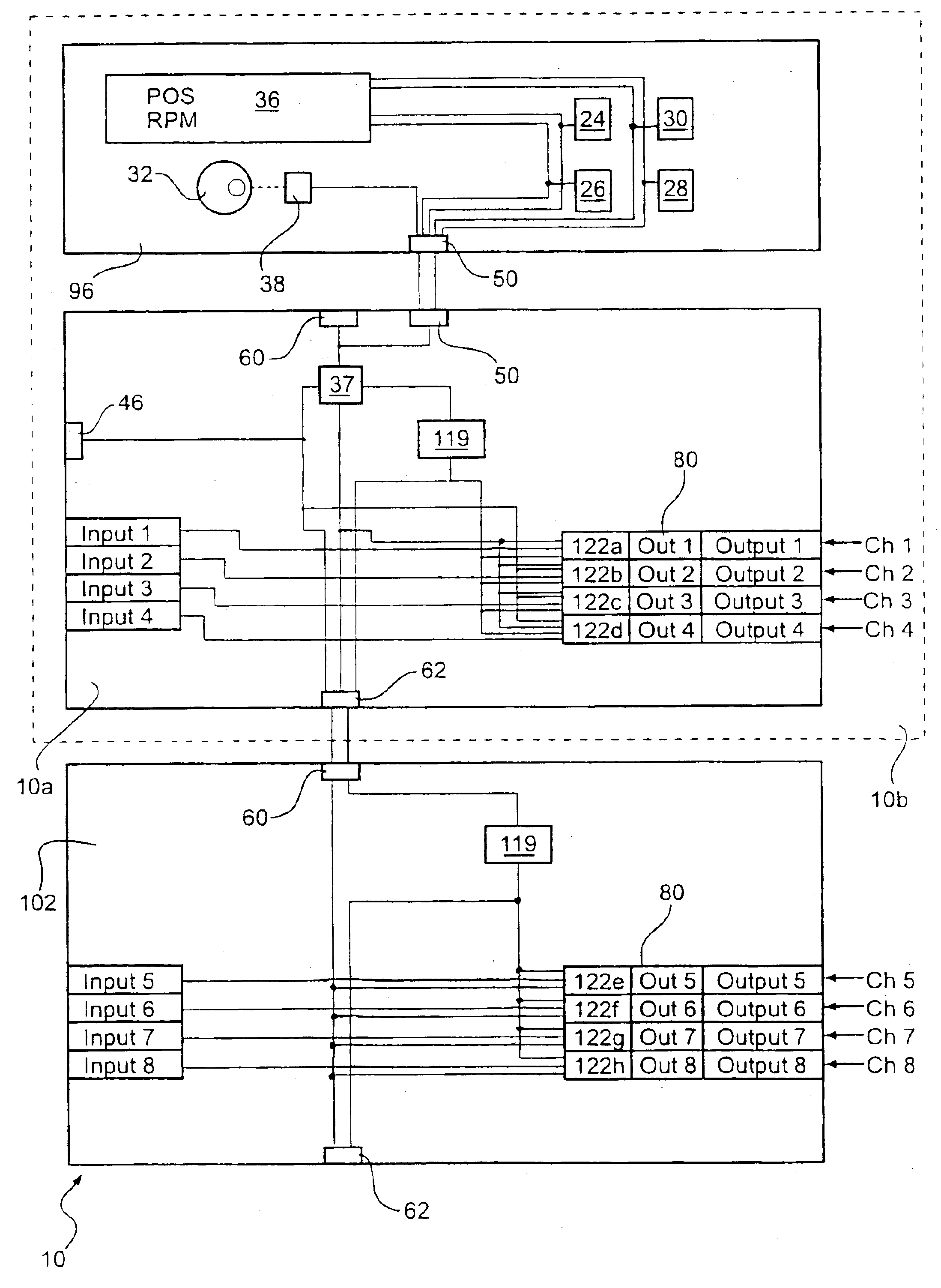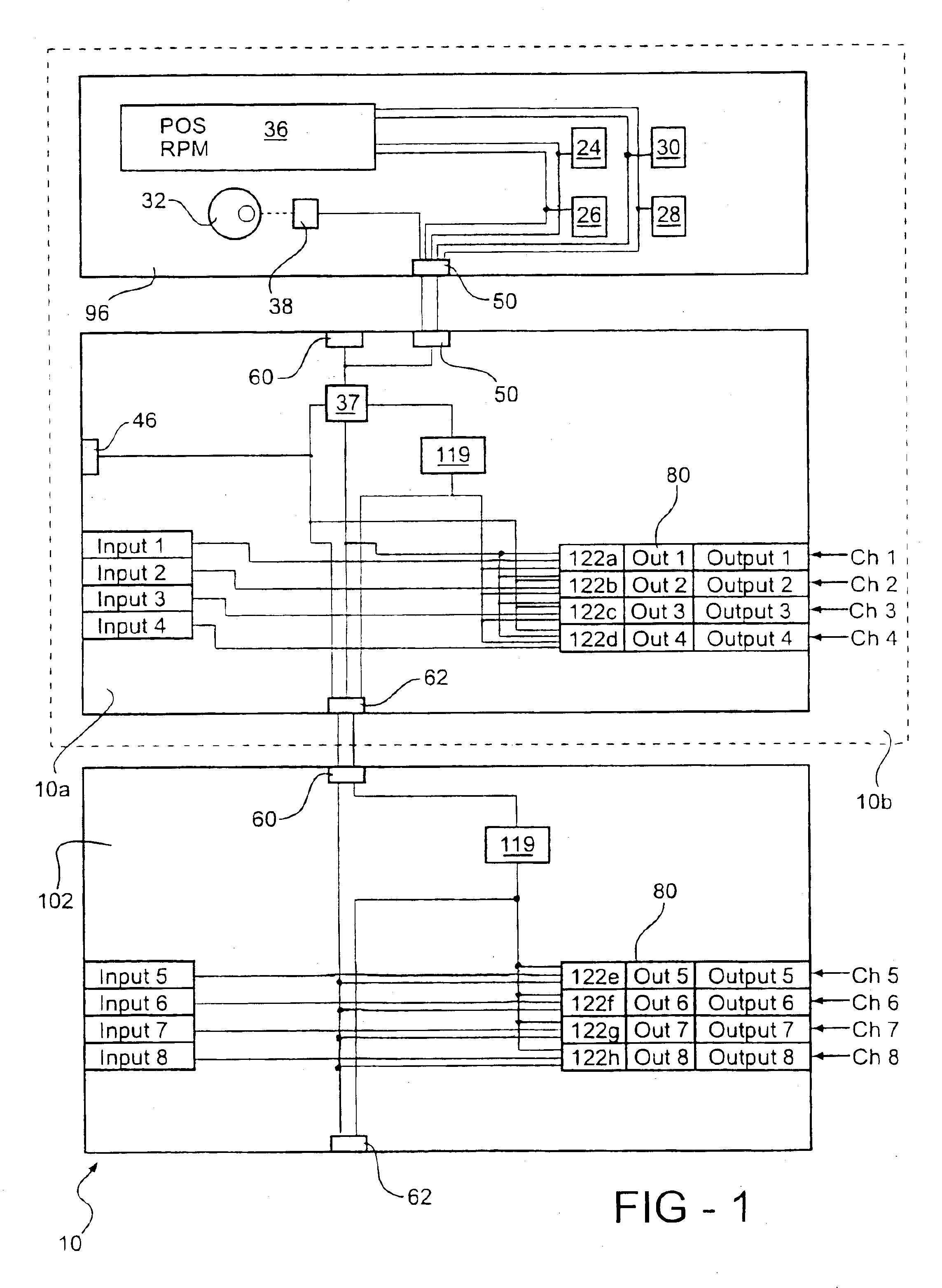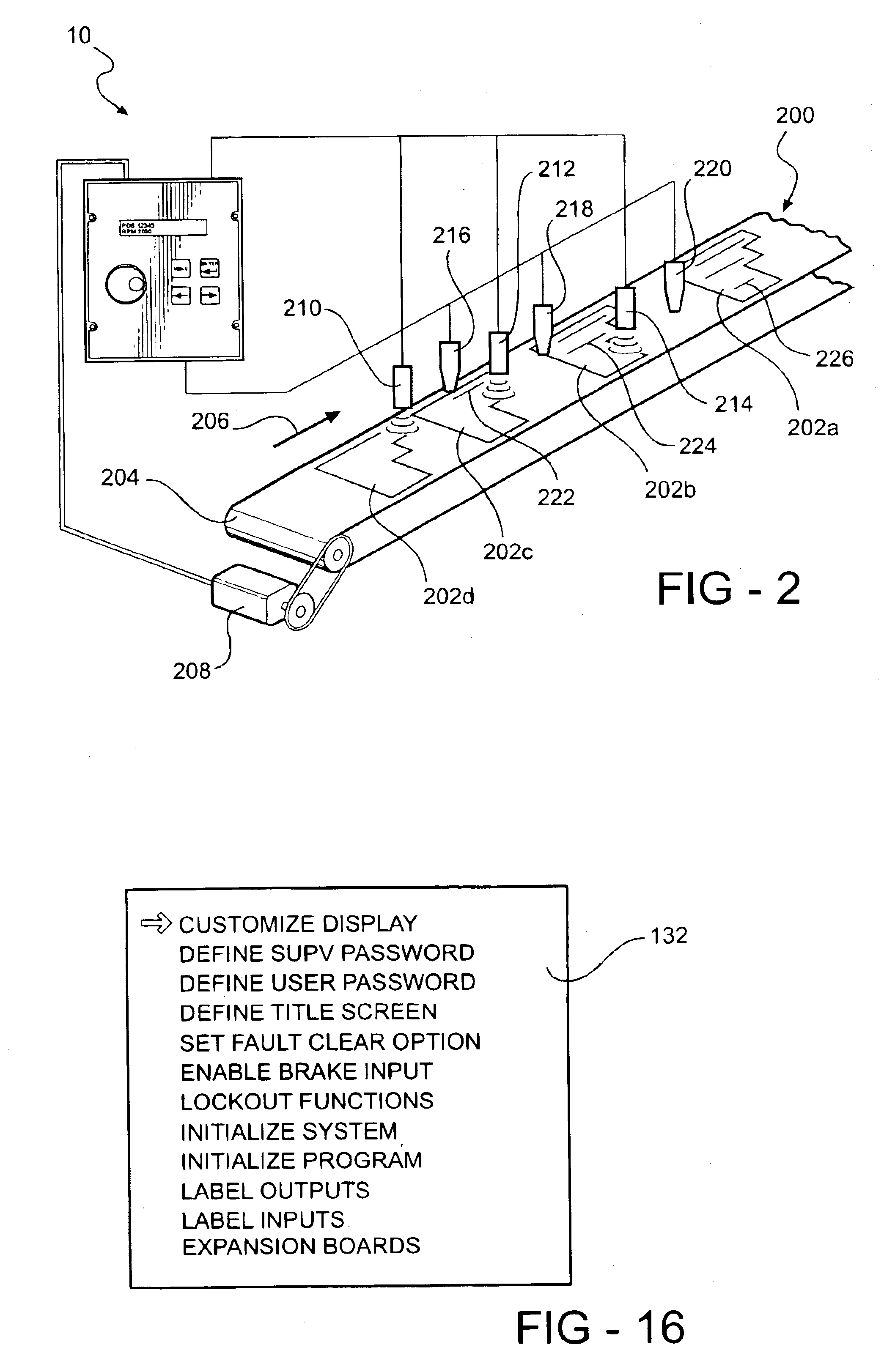Programmable limit switch with distributed intelligence
- Summary
- Abstract
- Description
- Claims
- Application Information
AI Technical Summary
Benefits of technology
Problems solved by technology
Method used
Image
Examples
Embodiment Construction
[0052]The programmable limit switch incorporating the present invention is shown and described with reference to FIGS. 1-18. FIG. 1 shows a block diagram of certain modules of the programmable limit switch (PLS) 10 incorporated into a portion of a system with eight input connectors. Inputs 1-8 internally tied to eight output circuits, or channels, Ch 1-8, respectively. The input connectors. Inputs 1-8 and output channels. Ch 1-8 are split evenly between a blind main controller 10a and an expansion module 102, which are two modules of the PLS 10. Thus, input connectors. Inputs 14 and output channels. Ch 14 are mounted on the blind main controller 10a, while input connectors. Inputs 5-8 and output channels. Ch 5-8 are mounted on the expansion module 102. Although the four input connectors and four output channels are incorporated into the embodiments shown, eight input connectors and output channels on each of the blind main controller 10a and the expansion module 102 are preferred.
[0...
PUM
 Login to View More
Login to View More Abstract
Description
Claims
Application Information
 Login to View More
Login to View More - R&D
- Intellectual Property
- Life Sciences
- Materials
- Tech Scout
- Unparalleled Data Quality
- Higher Quality Content
- 60% Fewer Hallucinations
Browse by: Latest US Patents, China's latest patents, Technical Efficacy Thesaurus, Application Domain, Technology Topic, Popular Technical Reports.
© 2025 PatSnap. All rights reserved.Legal|Privacy policy|Modern Slavery Act Transparency Statement|Sitemap|About US| Contact US: help@patsnap.com



